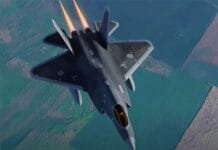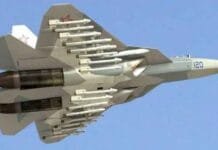Explore the groundbreaking capabilities of China’s 096 submarine, a silent force reshaping global naval dynamics. Uncover the geopolitical implications and the growing race for nuclear supremacy on an international scale.
Race for Supremacy: Nations Compete in Silent Submarine Technologies
In the realm of naval defense, China is on the brink of achieving a monumental feat with its silent 096 type ballistic missile submarine. This sophisticated vessel, anticipated to surface by the end of the decade, poses a significant challenge to global powers, thanks to its state-of-the-art technology and strategic collaboration with Russia.
The Stealth Advantage: Redefining Submarine Silence
Defense experts unanimously agree that the integration of Russian technology into China’s submarine program is a game-changer. The 096 submarine’s ability to operate silently beneath the waves is a result of groundbreaking advancements, making it an elusive threat in the vast expanses of the sea. The implications are clear – tracking this submarine will be an arduous task for nations, particularly the United States and its allies.
[ez-toc]
Strategic Challenges for America and Allied Nations
Discussions surrounding China’s silent nuclear submarine took center stage at a conference held at the US Naval War College in May. The China Maritime Studies Institute further shed light on this groundbreaking development in an August article. The implications are significant for nations like India, which currently monitors China’s nuclear activities in the South China Sea and the Indian Pacific Sea. With the imminent arrival of the 096 submarine, the challenge for these nations will undoubtedly multiply.
Global Dynamics: Silent Submarines on the Rise
While China takes the lead in submarine innovation, it’s essential to note that other nations, including India, also boast silent nuclear submarines. Vagir, part of the Indian Navy’s arsenal, stands as a testament to the global competition in underwater capabilities. As geopolitical tensions rise, countries like Saudi Arabia, Iran, and Belarus are expressing keen interest in acquiring nuclear weapons, further complicating the global landscape.
Nuclear Proliferation: A Growing Concern
The global race for nuclear weapons is accelerating, with nations like Saudi Arabia, Iran, and Belarus making strides in their nuclear programs. Israel’s Atomic Energy Commission recently issued a warning about Saudi Arabia’s nuclear ambitions, with reports of China extending assistance in their nuclear endeavors. Meanwhile, nuclear stockpiles in Pakistan are rapidly increasing, set to reach 200 weapons by 2025, according to American nuclear scientists.
The U.S. Defense Ministry’s claims about Iran’s nuclear capabilities add another layer of complexity, asserting that the country possesses enough material to develop nuclear weapons. Simultaneously, Russia’s approval for deploying nuclear weapons in Belarus raises the specter of yet another player entering the nuclear arms race. The Stockholm International Peace Research Institute (SIPRI) reports a dangerous surge in the global stockpile of nuclear weapons, with 12,512 in existence, and a worrying increase of 96 compared to the previous year.
Regional Dynamics: Asia’s Nuclear Arsenal Landscape
In the context of Asia’s nuclear capabilities, a closer look reveals the shifting balance of power. China, in a year, has added a substantial 60 nuclear weapons to its arsenal, outpacing both India and Pakistan. The latter has increased its nuclear stockpile by five weapons, while India developed only four. The arms race is not confined to Asia alone, as operational nuclear weapons are on the rise globally, with the exception of the United States.
Navigating the Waters of Nuclear Warfare
As we delve into the intricate web of global nuclear dynamics, the emergence of China’s 096 type ballistic missile submarine takes center stage. Its silent capabilities, coupled with the growing nuclear ambitions of various nations, paint a complex and challenging picture for international security. In this ever-evolving landscape, staying abreast of these developments is imperative for nations seeking to maintain a strategic edge in the tumultuous waters of modern naval warfare.




















